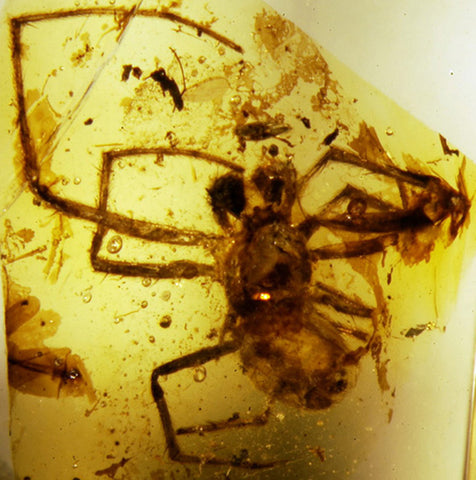How many species of spiders are there?
Posted by David Penney on
Spiders are one of the most diverse groups of animals on Earth today. Indeed, they are exceeded in terms of described numbers of species, only by the five largest insect orders (Coleoptera = beetles, Hemiptera = true bugs, Hymenoptera = ants, bees and wasps, Lepidoptera = butterflies and moths, and Diptera = true flies) and the Acari (mites and ticks). However, it should be remembered that spiders are ALL obligate predators (they all hunt and kill other organisms for food), whereas all the other aforementioned groups encompass multiple feeding strategies (e.g. predators, herbivores, detritivores, parasites, frugivores, etc.). Hence, the global and evolutionary success of spiders is rather unique. It has been proposed that their ability to use silk in a multitude of different ways is one of the main factors that accounts for their success. They also have an extremely long geological history, with the oldest described fossils dating back more than 300 million years. It is quite amazing to think that spiders very similar to those around us today were weaving aerial webs in the time of the dinosaurs ... and quite possibly long before then.
A nursery-web spider (Pisauridae) protecting her offspring (West Africa)
So, how many species of spiders are there? The following infographic was generated from data held in the World Spider Catalog (which is updated twice each year and is currently hosted here: http://www.wsc.nmbe.ch/). It was produced by Theo Blick (Germany) and Samuel Zschokke (Switzerland) and is taken from the European Society of Arachnology website here: http://www.european-arachnology.org/wdp/?page_id=63.

What is shows is that in version 2.0 of the catalog (from 2001 and towards the centre of the spiral), the number of described spider species was 37,296, with 6 month increments until the present (version 16.5 of the catalog, 2016), with the current count of 45,828 described spider species. This represents an increase of almost 600 newly discovered species every year! Obviously, some parts of the world are better studied than others. For example, we have around 650 species of spiders in the UK and it is rare that we find new, undescribed species. However, many tropical regions are relatively poorly studied by comparison and it is very common to find new species in some places. Some published estimates put the expected number of living spiders around the 160,000 mark, so we still have quite a way to go in terms of documenting them!
The above numbers do not include the 1,269 described fossil spider species, which are mainly found as fossils preserved in amber, but also in rock. A full list of fossil spiders (and other arachnids) is also hosted on the World Spider Catalog website and can be accessed by clicking here: Fossil Arachnid Summary Checklist.

A dinosaur era spider in Cretaceous amber from Lebanon
Spiders are really cool and interesting creatures on so many different levels. If you would like to find out more about the latest cutting edge research or their long geological history as documented in the fossil record, take a look at some of our titles on these subjects (clicking the cover image will take you to the product page where you can read reviews and find out more information, or even purchase a copy):
Share this post
- 0 comment
- Tags: Just for fun
0 comment




